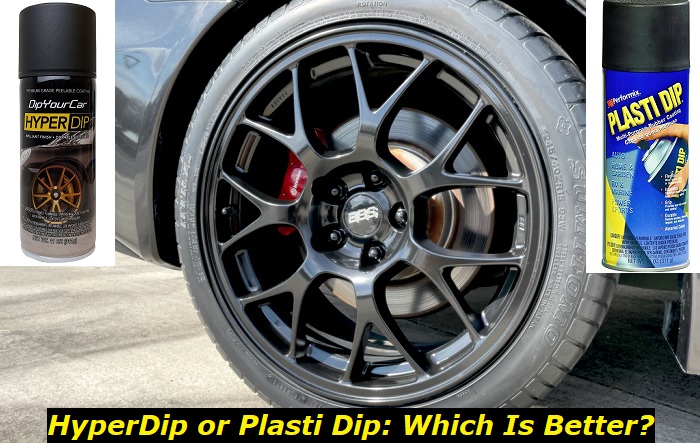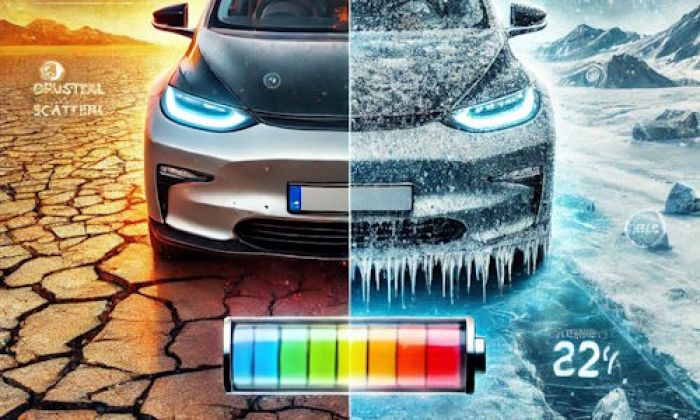Driving around with terrible rims is an absolute no-no for us and it should be for you too. While there are several other options to enhance your wheel's appearance, Plasti Dip cuts it for most people. And it's easy to see why. This solution is quick and easy. You think of improving your rim's aesthetics in one second, and in the next, it's done.
Wheels mods highlights
- Commonreasons:pursuit of better design
- Average prices:$400 - $2,000
- Average waiting time:3 - 10 days
- Common problems:baddesign, unwanted results, poor painting quality
- DIY mods:possible but very complicated
- Level of satisfaction:medium

Getting The Basics Right: HyperDip vs Plasti Dip
Plasti Dip is a peelable air-dry rubber coating that has multi-use, from DIY home improvement to automotive customization. On your car rim, it will protect the surface from abrasion, moisture damage, and acids. You can also easily remove it off most surfaces for a different look or after the current surface wears out.
HyperDip is a more recent solution that works just like Plasti Dip but boasts greater efficiency. The advanced technology promises a smoother and stronger coating.
Both products might be similar but knowing their little differences is all you need to choose the most suitable for your car rim. We'll be comparing HyperDip and Plasti Dip based on different factors. Look out for the characteristics you consider more necessary and decide based on those.
- Consistency
If you ever used both paints, then you can confirm that Plasti Dip has a thicker consistency. HyperDip is less viscous and this is an advantage for two reasons. The first is that a thinner consistency means less chance of accumulating brake dust. Plasti Dip being more viscous might be tougher to handle in the area of workability. This results in additional effort spent cleaning if you overspray it.
- Application process
HyperDip requires more expertise to apply since it is recommended that you spray in quicker movements to avoid it running to other areas of the wheel. Remember it has a thinner consistency so demands a higher level of carefulness during application.
Plasti Dip is easier to manage and you do not need to be overly concerned about the product running or how light the initial coat will turn out. Unlike HyperDip, starting with a thick first coat of Plasti Dip may not be so much of an issue. Another upside to this is that you will probably end up using fewer cans to cover your car rims.
- Color options
With over 50 colors available, Plasti Dip is the clear winner here. From standard colors to luxury metal, and those that glow in the dark, the possibilities are endless. Your rims can take on different colors as often as you want them to, and with the colors you create. Yes, the Plasti Dip Create Your Color Kit allows you to create custom colors with up to 2 bottles of tint.
HyperDip has pretty impressive colors too, like what you get with the Bronze Gold or Reaper Red kit. If you simply want your car rims painted in a standard color, or something close to its original color, you will certainly find something here for it.
- Color finish
Comparing the standard colors from both products, there is a noticeable difference. HyperDip has a satin finish while Plasti Dip has more of a matte black finish. This means if you want a bit of gloss or sheen, HyperDip is the product to go for. Most people miss this difference in the color finish but it is there, although subtle.
- Durability
If there is one thing HyperDip prides itself in, it is in beating Plasti Dip when it comes to durability. Your car rim will retain its color and stretch without cracking for a longer time. This is why its manufacturers describe the product as an advanced aerosol paint.
If you prefer to experiment with colors, opt for Plasti Dip. It is great for short-term use and will allow you to live your dreams of showing up in newly-colored wheels, every other week.
- Appearance
Because HyperDip has a thinner consistency, your car rims will look much smoother than with Plasti Dip. The latter is PVC-based and has a rubbery feel. The method of application is another factor that matters here, so ensure to follow the correct guidelines to get the best out of any of the products.
- Cost
At around $16, Plasti Dip is the cost-friendlier option between both products. A can of HyperDip costs a little above $20 and you might end up needing more cans to cover your car rims because of its low viscosity. If you are trying to save money, Plasti Dip is the product for you.
- Maintenance
HyperDip uses the latest aerosol paint technology, so we can expect it to offer easier maintenance. Plasti Dip has a thicker consistency and will accumulate brake dust, which means more cleaning between uses. It is also less likely to withstand gasoline since it's a solvent-based coating, so you want to apply caution when filling your tank.
- Temperature
You can apply both products in cold weather but HyperDip would probably be more accommodating since ideal temperatures for its application range from 30F - 95F. In any case, simply warm the paint cans in warm water before applying them for an even finish. Also, allow for more dry time.
- Drying time
Your climate is a major determinant here but typically, both products require around the same time to dry and completely cure. It'll take about 30- 45 minutes for each coat to dry, then you will have to wait 6-24 hours for the rims to completely cure.
How Many Coats Do You Need for Rims?
This depends on the level of saturation you are trying to achieve. Anywhere between 6-10 coats of either product should completely cover the rims. The advantage of applying a thicker coat is that you will find it easier to peel the product when the time for that comes.
Which product is Easier to Remove: HyperDip or Plasti Dip?
Both products are peelable so they should come off easily. However, HyperDip provides a stronger hold, so it might be more difficult to peel off.
If the coating starts to peel off in spots or you are simply aching to change the color of your car wheels, here are some removal methods to consider:
1) Dip Dissolver
You can find this product online or simply opt for Plasti Dip's own Dip Dissolver. Thick coatings come off easily but sometimes, thin ones can be challenging to peel off. A dip dissolver will come in handy here, but you will need a pressure washer.
- Apply the product generously to the wheel and wet the coated surface
- Give a few minutes for the dip dissolver to soak into the dipped rims
- Rinse away the softened Plasti Dip using the pressure washer
- Reapply the dissolver to areas still having the coating and repeat the process until the rim is completely clean
2) Rubbing alcohol
Using rubbing alcohol can help soften the dipped surface for easy removal. Follow the steps outlined and ensure to wear gloves to protect your skin:
- Use light layers of rubbing alcohol on the rims
- Leave it to soak in for at least 5 minutes, making sure none gets to the tires
- Start peeling the Plasti Dip or HyperDip
3) Paint thinner
When using a paint thinner to remove Plasti Dip, work in a well-ventilated area like your driveway as the fumes from the thinner can be dangerous.
- Pour some thinner into a container and get a few paper towels completely damp
- Lay the towels over the car rim and wait for it to soak up some of the Plasti Dip
- Use a drywall scraper to remove the softened Plasti Dip and wipe off any leftover mess
- Wash your car with soap and water in case some bits of the thinner accidentally got to other parts of the vehicle.
4) WD-40
You can find this product in an auto supply store. Get one that comes in a spray bottle to make application easier.
- Use paper towels or a microfiber cloth to work in the WD-40
- Leave it in for some minutes and wipe it off with a clean cloth
- Scrape off stubborn paint remnants with a blunt razor
Conclusion
You are now well-informed to choose between HyperDip and Plasti Dip for your next car-rim painting project. Whichever you settle for, just make sure you are not mixing both products in an attempt to enjoy their respective benefits. The result won't be great and you might end up ruining your wheels. Also, take adequate precautions like wearing a mask when spraying any of these products onto your car rim to avoid inhaling the toxic fumes.
About the authors
The CarAraC research team is composed of seasoned auto mechanics and automotive industry professionals, including individuals with advanced degrees and certifications in their field. Our team members boast prestigious credentials, reflecting their extensive knowledge and skills. These qualifications include: IMI: Institute of the Motor Industry, ASE-Certified Master Automobile Technicians; Coventry University, Graduate of MA in Automotive Journalism; Politecnico di Torino, Italy, MS Automotive Engineering; Ss. Cyril and Methodius University in Skopje, Mechanical University in Skopje; TOC Automotive College; DHA Suffa University, Department of Mechanical Engineering






Add comment